In all the years I’ve been writing this blog, one film maker whose name keeps cropping up every now and then—whose films I’ve reviewed, whose work I’ve commented on—is the brilliant Hrishikesh Mukherjee. From his editing of classics like Do Bigha Zameen, Madhumati and Chemmeen, to his direction of both popular hits like Asli-Naqli and relatively little-known works like Majhli Didi and Biwi aur Makaan, Hrishikesh Mukherjee has had a hand (and a mind and a heart, and sometimes—as I discovered when I read Jai Arjun Singh’s ‘sort of biography’ of the man—a house) in some of my favourite films.
‘The World of Hrishikesh Mukherjee’ (ISBN: 978-0-670-08708-2; Penguin Books India, 331 pages, Rs 599) comes with a singularly apt subtitle: ‘The Filmmaker Everyone Loves’. That phrase, or so it emerges from Jai’s analysis of the man and his films (more his films as a reflection of the man), could well be turned on its head and still applied fairly accurately: the filmmaker who loved everyone.
Not completely accurate, of course (it’s still a generalization), but as anybody who is familiar with Hrishikesh Mukherjee’s oeuvre can tell, there’s a certain humanism about his storytelling. Characters are rarely pitch black; even dark grey is an unusual colour, and if it is present in a character, chances are it will eventually veer away towards the white rather than the black. Think Chupke-Chupke, think Golmaal, Mem-Didi, Bawarchi, Majhli Didi, Naram Garam, Rang Birangi, Anuradha… there are no larger-than-life villains here, nothing that is irredeemably bad about a character.
That, as Jai explains in the section An absence of bad men (part of the chapter A World in Miniature), is a hallmark of the ‘humanism often associated with directors like Satyajit Ray, Yasujiro Ozu or Krzysztof Kieslowski—put very simply, the idea that circumstances and situations are bad, not people themselves’. And Hrishikesh Mukherjee took this idea forward in different ways in his films: not just by creating stories that the middle class could relate to, but by peopling them with likeable characters. By ‘seeing good things in people’, as Jai points out, with examples such as Bindu’s Chitra from Abhimaan, a far cry from the callous and conniving vamp the actress usually played.
In the thirteen chapters that comprise this book, Jai covers just about every aspect of Hrishikesh Mukherjee’s cinema. It begins with Plots and Storeys. This is not just about the plots of Hrishi-da’s films and the importance of the ‘makaan’ or house in them, but also about his own house, Anupama, which used to become almost an adda, and which actually was the set in many of the man’s films.
From there, Jai wanders on to other topics big and small: seriousness and lightness; ethics; the ‘puppet’ characters who dance to the tunes of a Mehmood in Biwi aur Makaan or a Deven Verma in Rang-Birangi. Relationships between male and female characters. The dignity accorded to supporting characters, and the fact that even comic characters are not subjected to being merely pie-in-the-face props designed to get some guffaws from the front rows. The ‘fluidity of identity’ (the smooth, unflappable way in which characters tend to—Wodehouse-like—assume identities).
And, music. An accomplished sitar player himself, Hrishikesh Mukherjee invariably paid special attention to the songs in his films—to their music, their lyrics, and their picturization (which, as Jai points out, he never left—as several other directors were wont to do—to the tender mercies of assistants).
This book is not, as the author mentions in the introduction, a biography of Hrishikesh Mukherjee. There are only a couple of pages about his coming to Bombay and his ascent in the film industry (and there’s even less about his personal life). What it is, is a book about Hrishikesh Mukherjee’s cinema.
There are some anecdotes sprinkled here and there (for instance, Sharmila Tagore’s confession of feeling guilty that she—then young and obstinate—had insisted on a heavy bouffant for her role as Uma in Anupama, which really didn’t suit the character at all, as Hrishikesh Mukherjee had warned her). There are excerpts from interviews, both with people who worked with the director as well as his relatives, and with Hrishikesh Mukherjee himself (one is from an interview given to Shilpi, whose father Tarun Bose played one of the most important roles in one of Hrishikesh Mukherjee’s best films, the poignant Anupama).
Halfway through the book is a collection of glossy colour reproductions of material related to Hrishikesh Mukherjee and his films: stills, song booklets, and photographs. The book ends with a chronological filmography of the filmmakers, including a brief (very brief) synopsis of each film, its main cast and crew, and year of release.
What I really liked about The World of Hrishikesh Mukherjee is the overall feel to the book: it’s analytical, it will teach you a lot (it certainly taught me to look at elements of Hrishikesh Mukherjee’s—and I daresay, perhaps other filmmakers’—cinema in ways I had probably never paid much attention to before). Yet, it has nothing in it which will put off someone who’s basically a fan; you don’t need to have a done a course in film appreciation to appreciate this book. It’s immensely reader-friendly.
Add to that the fact that Jai Arjun Singh’s sense of humour surfaces every now and then. In the main text, of course, but equally often in the irreverent and delightful footnotes, which are almost like asides: (referring to Kotwal Saab, where ‘Bharat comes to his senses, a brush with a bullet having apparently cleared his mind’s cobwebs’, Jai adds as a footnote, ‘But more realistically than the Mithun film where a bullet passes through the hero’s brain, conveniently excising a malignant tumour’. Or—really corny, this one, though it did make me snigger—‘In that film [Rang Birangi] Ravi’s irresponsible stereotyping…’ comes with the footnote ‘Or ‘stereo-typisting’. Sorry.’ (which, if you don’t know Rang Birangi, refers to the fact that Deven Verma’s character Ravi tries to spice up his friends’ marriage by suggesting a flirtation with his secretary).
Verdict? Yes. An absolute and complete yes. I am a fan of books that make me feel, by the time I finish them, that I’ve come away richer for having read them. That the hours spent on reading it have taught me something valuable. This did, and in a comfortable, chatty, often humorous way. Don’t miss this if you’re a Hrishikesh Mukherjee fan. No, not if you want the gossip about the man or every little detail about his life, but if you like the films he made.
The World of Hrishikesh Mukherjee: The Filmmaker Everyone Loves is available online at Amazon India, here, at Flipkart, here, and at Infibeam, here, besides other online stores as well as brick-and-mortar bookstores.


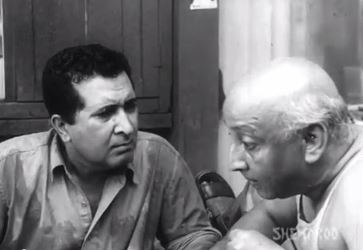
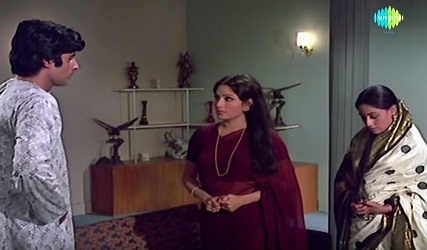
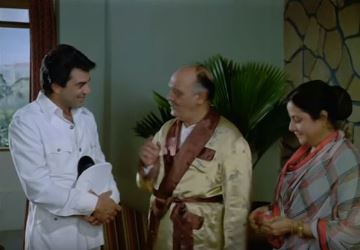
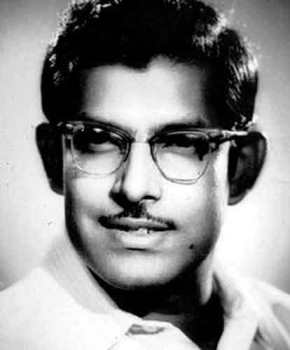
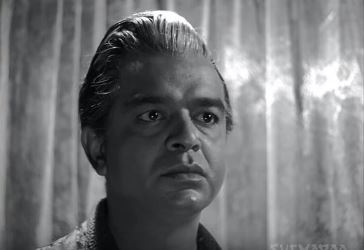

Just yesterday I was thinking, that I would like to live in a Hrishikesh Mukherjee film. In that world even when Anand dies, somehow everything is okay with the world. Exceptions in this case would be Namak Haram and Satyakam maybe.
Thank you for the recommendation, dear Madhu.
LikeLike
“In that world even when Anand dies, somehow everything is okay with the world.”
But you know what? The first time I watched Anand was on TV, and I hadn’t ever seen a Hindi film end with the hero’s death before. He died, and I kept thinking, “Now something’s going to happen. It’ll turn out to be a joke.” And it didn’t. I was pretty upset. :-)
Which reminds me, I haven’t seen Namak Haram yet.
LikeLike
That is a very interesting anecdote about Anand. :)
Namak Haram is good. You should watch it someday, but what a pity, we will never be able to read your review of it. :(
Have you seen Alaap? People call it slow and everything, but i loved it. Only thing is that the father’s role, in my opinion, is miscast. I would have preferred Pran. After reading this review, I went through his filmography and I saw that there are many films, which I had never heard of or one hardly hears anymore of. A good example is Kotwaalsaab, although the songs, saathi re bhool na jana mera pyar and suman saman man apna were quite famous during that time. And I never thought that Aashiq (Raj Kapoor, Padmini & Nanda) was directed by Hrishikesh Mukherjee. And I’d never heard of Lathi (1988) and Namumkin (1988).
LikeLike
I have seen Alaap, but so long back that I remember very little of it except that it bored me a lot! But then, I was a child when I saw it, and I had little patience for films other than the regular romance-suspense-comedy type. Alaap, I think, was a little too hatke for my liking at that age. Mabe I should give it another try.
Yes, I’d never heard of those movies you mention, either.
LikeLike
I saw ‘ Alaap” at my age of 16 only.I use to see once in a month even in 2016.I think it is best movie of Hrishida as simple as life.
LikeLike
hrishikesh mukherjee was one of the finest editor and director I think there are frequent comparisons between basu chaterjee and him. my favourite film of hrishikesh mukhejree is golmaal. i think basu chaterjee contribution is overlooked. apart from movies he made rajni and byomkesh bakshi for doordarshan.
LikeLike
I’d forgotten Basu Chatterjee had made Byomkesh Bakshi – that was an excellent series.
LikeLike
rajit kapoor was the best byomkesh bakshi. i love basu chaterjee movies any day over hrishikesh mukherjee. i love baton baton mein, choti si baat, piya ka ghar, chameli ki shaadi and all. his contribution is overlooked and frequently comparing him with hrishikesh mukherjee irks me. both are legends. and both made more and less similar movies. but i find basu da movies more real.
LikeLike
Very nice review Madhu didi. I’ve been reading Jai Arjun Singh’s column that appears in Mint Lounge every Saturday. I like his writing. It’s very straightforward and gentle, and the topics he chooses are those that not many film writers or critics talk about.
Although I know the story of most of his earlier films (Musafir, Anari, Anuradha and the like) I’ve seen only two Hrishikesh Mukherjee movies: Abhimaan and Satyakam. His movies were so practical and matter-of-fact and his characters so realistic (I especially liked Sanjeev Kumar’s character in Satyakam) that I knew only a very mature and brainy person could have directed it. Plus his songs were appropriately placed and never interrupted the narrative.
Thank you for the review didi! It’s very nice :)
LikeLike
I’m glad you liked the review, Rahul. I liked the book – and I like Jai’s writing, as such. Besides being intelligent and well thought-out, it’s also marked by – as I’ve mentioned in my post – a fantastic sense of humour. That’s quite true of Jai himself; he’s one of those writers who are as much fun to talk to as they are to read.
Oh, please do expand your repertoire of Hrishikesh Mukherjee films to his comedies as well. Satyakam and Abhimaan are both excellent films, but so are Chupke-Chupke and Golmaal and Biwi aur Makaan… all classics. And among the non-comedic, more ‘serious’ films, I’d definitely recommend Anupama, Majhli Didi and Anuradha): all are memorable.
LikeLike
Thank you for your suggestions Madhu didi. I’ve really been wanting to see Anuradha for a long time. I loved the songs by Pt. Ravi Shankar.
I also read your review of Biwi aur Makaan. I liked the part where you said Biswajeet and Keshto came out in sarees ‘looking stunned’. God I couldn’t stop laughing! 😂
LikeLike
Seriously. :-D They look as if they don’t know what hit them! Very funny. And Keshto Mukherjee is an absolute scream, just through his expressions – it’s not as if he’s resorting to slapstick or is given very wacky dialogues: but he made me giggle every time he came on screen.
LikeLike
Yes I liked him in Padosan as well.. He hardly had any dialogues but he still managed to be funny.. :)
LikeLike
Yes. He was great in Padosan too. :-)
LikeLike
I’ve been waiting to get hold of this book ever since a friend told me about it; unfortunately, it hadn’t been published when she came to the US, so I have to wait until I get there to pick it up. Which, of course, I will. Especially now that you’ve given it a good review. :)
From his editing of classics like Do Bigha Zameen, Madhumati and Chemmeen,…
This bit is interesting, because a reader nudged me towards another book – Bimal Roy’s Madhumati, written by his daughter, Rinki Bhattacharya. In this review, it mentions how Hrishikesh Mukherjee took credit for another man’s work. And how Bimal Roy remained silent. :(
LikeLike
Anu: yes, I have heard that story too, and it sounds plausible, especially given the vague ways in which credit used to be apportioned for films made by directors who had a very close-knit crew. Have touched on this in the book itself in another context – HM’s own films of the 1970s, where writing credits used to be manipulated because often teams of writers would be working across multiple projects, and producers weren’t willing to pay salaries to 3-4 writers for each film. (I had an intriguing chat with Gulzar-saab about this just a few weeks ago, and what he told me then was different from what he had told me a few years ago when I was researching for the book; which raises that problematic issue of how unreliable people’s memories can be when they talk about the past, making a biographer’s or researcher’s work very complicated!)
LikeLike
Thanks for quasi-confirming that, Jai. I agree about the lack of confirmed information being a block for biographers/researchers.
Radhika had offered to get me your book last year, but it hadn’t been published when she came to the US. I’d been waiting for it ever since I read about it on your blog. :)
LikeLike
Do read, Anu! I really enjoyed this book. When I went to the Amazon India site to get the URL, I was surprised to see that someone had given it a poor rating, saying that it had nothing about Hrishikesh Mukherjee’s life (I’m paraphrasing; I don’t remember exactly what). If what you’re looking for is a bio of the man, then this book won’t work. if, on the other hand, you want to see an analysis of the themes and tropes and elements he used, how he worked them into his films, and so on – I think this book accomplishes that very well.
As for the bit regarding Bimal Roy and Hrishikesh Mukherjee, I see that Jai has answered that in his comment, so – since in any case, I have nothing further to add – I will keep shut. :-)
LikeLike
I definitely will, Madhu. In fact, I ordered it as soon as I finished reading your review. It will be waiting for me when I get to India. Honestly speaking, I’m more interested in a person’s cinema, than in his or her personal life. But yes, I do like reading anecdotes about them – some of them are quite funny, some are heartwarming. It sort of makes them more ‘real’ as people, if you know what I mean. Otherwise, give me only the personal details that influenced hi/her path in cinema. :)
LikeLike
I agree with that. I have little interest in people’s personal lives (especially not their love lives – I think that should be accorded a certain amount of privacy), but yes, something that shows you the person behind the celebrity can make for a good anecdote. Besides, often, providing an insight into why their work is the way it is – since our personalities show up so much in what we do, too.
LikeLike
I am looking forward to reading this book. Hrishi was a very fine director and a smart editor. How many times I have seen Chupke Chupke I have lost count. His characterisation is the secret of his success in his films
LikeLike
Yes I did post a comment on your Hrishikesh book. Is it mandatory to sign in wordpress. If so then I am not interested.
LikeLike
No, you don’t need to sign in to WordPress. Just writing your e-mail address (as in the case of your comment, to which I’m replying) is enough. The first time you use the e-mail address and user name, your comment will go for moderation; after that, it will appear automatically.
LikeLike
Yes, his characterization is superb. Whether he’s doing really nuanced characters like the leads in Anupama or Anuradha, or the more clownish characters of Golmaal, Biwi aur Makaan (and the classic Chupke-Chupke – I too have lost count of the number of times I’ve seen it)… he’s always spot on.
LikeLike
Madhulika, thanks so much for this generous review. When I wrote the book, my main hope was that at least a few readers who care about old cinema (and popular cinema) would find something of worth here – so it’s gratifying to read your thoughts. And particularly pleased that you liked the footnotes. (Unfortunately the e-book version has turned many of those into endnotes, which in my view spoils the effect.)
LikeLike
My review isn’t generous, Jai – just honest. I did like the book a lot. I liked the delicate balance you’ve managed to maintain between providing insights into the man’s work (and through that, into his mind and heart) on the one hand, and being witty about it. Too many people nowadays seem to think that you can’t be analytical without being dry as dust.
And the footnotes are the icing on the cake – such a shame they ended up being endnotes on the digital version! But is there a hyperlink that allows you to switch back and forth between the original page and the endnote? I was reading a collection of Akutagawa’s short stories, in digital form, which had that, and though I’d have preferred footnotes, the endnotes worked just as well, because the navigation was well planned.
LikeLike
Is there a hyperlink that allows you to switch back and forth between the original page and the endnote?
Yes, there should have been a hyperlink of that sort. There are some websites now where a footnote appears as a little pop-up next to the text, if you just click on the number in question, and I would have been fine with that for the book. Sadly it didn’t happen, and Penguin has been unable to offer any explanation.
LikeLike
Ah. I see.
Sigh, Publishers.
LikeLike
Glad to see you loved the book, just as much as I did. I feel that more writers should step in and record stuff that often goes unrecorded. While there are some readers who are more interested in the personal lives of celebrities,that is of course the juicy bits of gossip, but there are many who are interested in what goes on behind the scenes during the making of a film. What I liked best about this book was Singh’s in depth analysis of Mukhrjee’s lesser known films like Biwi Aur Makaan. Personally I also liked the way he analyzed my father’s character in Satyakam. Hardly anyone talks about it, it is more or less overshadowed by Anupama.
On the topic of Rinki Battacharya’s book, I laid my hands on it by chance., I bumped into Rinki Bhattatacharya at Mr. Jai Arjun Singh’s session at the Times Lit Fest, she invited my brother and me for the BImal Roy Memorial event she holds every year. At this annual event she honours the memory of old timers associated with her father, as well as new emerging talent. At this function she honoured my father’s memory by presenting us with some mementos, one of which was this book on Madumati written by her. One glance at this book’s title and later scanning through the book I knew this is what I was waiting for, for a long time. It is full of history about how Madhumati was made, it is great that she took the time to record this history otherwise everything would have been lost in the passage of time.
LikeLike
Yes, I really liked the fact that Jai paid a good deal of attention to the lesser-known films of Hrishikesh Mukherjee. Abhimaan, Anand, Chupke-Chupke are all well-known and enough has been written about them, but films like Biwi aur Makaan and Mem-Didi are pretty much hidden gems. I hope this book helps introduce people to some of these films that deserve to be better known!
I have seen the Madhumati book in stores, but haven’t bought it yet. Sounds good, though. Will you be reviewing it on your blog, Shilpi? (Which reminds me, I must read your review of Jai’s book too – I’d been putting it off because I wanted to read the book for myself before that, but I should check it out).
LikeLike
Yes Madhu, I plan to review it, I had just skimmed through the pages, now I am reading it. It is funny really, every time I think this is it with my father’s blog and something comes up and I end up adding a new post. That evening at the Bimal Roy Memorial event was a memorable and emotional one for my brother and me. We met Dharmendraji at this event. He was quite a close friend of our father’s. Anyway I will write about it all, as soon as I can.
Oh btw, I have been meaning to tell you for a long time, you know it has been quite a few years since we have been communicating with each other through our respective blogs, now I am keen to meet you. If you feel the same, then please let me know in advance whenever you visit Bombay. Maybe you might be invited to the next Lit Fest or something, I will definitely take time out to meet you.
LikeLike
Shilpi, I was in Bombay just for a few hours this last Saturday – for a lit fest. There’s a newish festival called Lit-O-Fest, which was held this year at St Xavier’s, and I was one of the panelists on crime fiction. It was very hurried – I came in on the morning flight, did my session, then after lunch, went back to the airport. I ended up spending about four hours at the airport, and was wishing I could have met one of the many friends and relatives I have in Bombay. But it was just so hurried, and I’d been so busy before and after as well, that I never even thought about it. Next time, I hope. I do so want to meet you!
LikeLike
Hopefully sometime, but just let me know some days in advance.
LikeLike
Yes, of course. I don’t like people trying to pull me into last-minute plans, so I don’t do it, either.
LikeLike
I enjoyed Jai’s book immensely although I could only get the ebook with it’s non-functional links to footnotes. I had watched almost all of Hrishikesh Mukherjee’s well-known films but after reading the book I came to know about lesser-known films like Biwi Aur Makaan, Mem Didi, etc. I watched these movies on youtube and enjoyed them tremendously.
I do agree with your review of the book. It is very well written and throws up interesting facts regarding several of his movies and characters. The only quibble I have is that at times I felt the author has over-intellectualized the motives behind some of Hrishikesh Mukherjee’s film making processes. The director was a very conflicted person – on the one hand he wanted to make thoughtful movies and on the other wanted to be a commercially successful director. Jai’s book does mention this conflict and the resultant frustration. After the failure of Satyakam he decided to stop making such serious movies. But in my opinion Hrishikesh Mukherjee caved in too easily. This is one aspect of Hrishikesh Mukherjee that Jai has not highlighted in this book.
LikeLike
Interesting point of view.
LikeLike
Soumya, thanks for the comment, and I’m very glad you mostly liked the book; the comments thread on Madhulika’s post has turned into a pleasure. Just a note in response to your quibble: in my view “thoughtful” and “commercially successful” aren’t mutually exclusive categories – far from it. And generally speaking, I’m not a fan of such binaries as “serious film” and “just entertainment”. As I have indicated in the book, for instance, I think of Biwi aur Makaan, Gol Maal and Chupke Chupke as serious films, in the best sense of the word “serious”. So while I do love Satyakam as well, I wouldn’t agree that HM necessarily lost something important when he decided to stop making overtly serious films.
(And in any case, we have evidence, despite what he said in interviews, that he DIDN’T stop – there were the ponderous, self-consciously solemn films of the 70s like Kotwal Saab, Sabse Bada Sukh and Naukri plus Alaap and Arjun Pandit, which are better but no Satyakams. Quite possibly he made most of these around the time the political climate of the mid-70s was making him depressed and he felt the need to weigh in with some “heavy” stuff: whatever the case, he wasn’t working at full steam or really tapping into his strengths as a director when he made them. Gol Maal, which ended the lean patch, is – again, in my view – a significantly better film than those “serious” ones.)
LikeLike
Great review Madhu. I relate to Hrishikesh Movies as my comfort food. Almost every time when I need to pick myself up, I replay movies like Chupke-Chupke or Golmal in my head..
It’s interesting how HM movies, very realistically, don’t necessarily have villains – it is the circumstances that cause adversities in life…
I had heard of some interesting anecdotes about Gulzar, Amitabh and Jaya talking about their :”Guru ji” aka HM on how they all worked together in great harmony. I wonder if the book describes their association in more depth..
LikeLike
I don’t recall anything specific about the association between HM, Gulzar, Amitabh and Jaya, though I could be mistaken, because my memory is pretty bad. In any case, Jai’s book has less of an emphasis on anecdotes and is more about the themes and tropes that characterise HM’s movies. I found it very insightful, that way.
LikeLike
You need to have a new look at Alaap and should not forget Sawan ki Jhule pare’Jurmana’ and Perhaps Guddi deserves mention as well.
Amitabh bachhan in a recent TV interview briefly mentioned Rishida While discussing his hits and film makers and quickly changed the topic saying woh to dusre darje ke filmaker hai unki baat yeha nahi kartey!!
Anand and Namak Haram could also be considered serious but entertaining films though both are said to be Insipired by Kurosawa’s works
LikeLike
I’m not sure whom you’re addressing this comment to – me or Jai. Jai does write extensively about both Guddi and Alaap in his book. I have seen both (though a long time back), but didn’t think it necessary to write about all the films Jai discusses in the book.
“Anand and Namak Haram could also be considered serious but entertaining films though both are said to be Insipired by Kurosawa’s works”
Hmm. Why the ‘though’ there? :-) Do you mean Kurosawa didn’t make ‘serious but entertaining’ films?
LikeLike
I have gone through this review and all the comments with immense patience and allowed myself to be enlightened by them. The book must be very good and your review is quite an objective one. I have seen all the HD movies barring exceptions like Do Dil, Aashiq, Chhaya, Saanjh Aur Savera and Chaitali. He remade his own movie Mem Didi (1961) as Achchha Bura (1983) and directed a fairly good thriller in the form of Naamumkin (1988). I opine that (mostly) a creative person’s repertoire of work is a mix of excellent and mediocre products. Film directors are no exception. If you watch Hrishi Da’s Pyar Ka Sapna (1969), Buddha Mil Gaya (1971), Jurmaana (1979) and Bemisaal (1982); you will find it difficult to believe that the same direction had given us gems like Anari, Anuradha, Anupama, Satyakam, Abhimaan, Chupke Chupke, Golmaal, Naram Garam etc. As far as taking credit of / plagiarising another’s work (or putting it mildly, seeking inspiration from) is concerned, I put on record that the story of Asli Naqli (1962) is very close to that of D.D. Kashyap directed Maya (1961). Interestingly, Dev Anand only is the hero in both of them. Hearty compliments for the highly informative, useful, unbiased and therefore, laudable review.
LikeLike
I agree, most creative people – even the very best – tend to have a mix of excellent and (possibly not mediocre, just average) work in their opus. I think in the case of someone like Hrishikesh Mukherjee, because he’s given us so many really good films, one expects a certain level – and when he falls below that (even if the film isn’t outright bad, just not as good as his others) it ends up being disappointing.
Glad you enjoyed the review. The book is indeed a very good one.
LikeLiked by 1 person